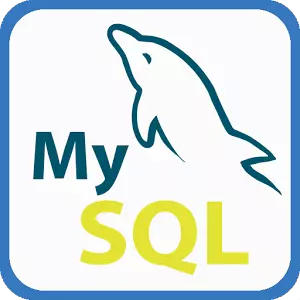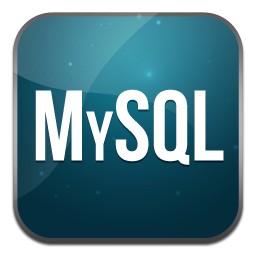Summary of usage of mysql_fetch_field function examples
mysql_init initializes the database link – gets a link mysql_real_connect connects to the database server and executes the mysql_query query – the query statement is a string that retrieves each row separately mysql_store_result – the results are stored in the link and are a one-time query. Get the table header from the result set Information – mysql_fetch_fields – header information is stored in the memory space pointed to by the MYSQL_FIELD type pointer. Parse the header – mysql_field_count to obtain the number of columns. The for loop parses column by column. mysql_fetch_row obtains data row by row from the result set and releases memory after parsing each column for each row. Space close link specific code #include 1. Mysql_fetch_field() function usage summary Introduction: mysql_init initializes the database link – gets a link mysql_real_connect connects to the database server and executes the mysql_query query – the query statement is a string that retrieves each row separately mysql_store_result – the results are stored in the link and are a one-time query from the results Set, get the header information – mysql_fetch_fields – the header information is stored in the memory space pointed to by the MYSQL_FIELD type pointer. Parse the header – mysql_... 2. Getting started with MySQL Simple data query Introduction: mysql_init initializes the database link – gets a link mysql_real_connect connects to the database server to execute the mysql_query query – The query statement is a string that retrieves each row separately mysql_store_result – The results are stored in the link, which is a one-time query. Obtain the header information from the result set – mysql_fetch_fields – The header information is stored in the memory space pointed to by the MYSQL_FIELD type pointer. Header – mysql_field_count gets the number of columns, and the for loop parses mysql_fetch_row column by column from the result set one row at a time 3. mysql tutorial: reading the data table field name mysql_fetch_field()_PHP tutorial Introduction: mysql tutorial: Read the data table field name mysql_fetch_field(). Now let's take a look at the mysql_fetch_field() function. This function reads the example name and field name of the mysql data table. Let's take a look at its syntax. mysql_fetch_field(data,field_o 4. Two ways to get mysql column information in php_PHP tutorial Introduction: Two ways to get mysql column information in php Method. 1. Use mysql_fetch_field $query=$db->query(" SELECT * FROM $tablename limit 1"); $num=mysql_num_fields($query); for($i=0;$i { $f_db=mysql_fetch_field ($query,$i); $showdb[]=$f_db ##5. Mysql_fetch_field and mysqli_fetch_field problems? Introduction: Problems with mysql_fetch_field and mysqli_fetch_field? Mysql Tutorial: Reading data table field names mysql_fetch_field() ##7. Introduction: Two methods to obtain mysql column information in PHP. 1. Use mysql_fetch_field $query=$db->query(" SELECT * FROM $tablename limit 1"); $num=mysql_num_fields($query). ; for($i=0;$i { $f_db=mysql_fetch_field($query,$i); $showdb[]=$f_db 8. Introduction: 25) MYSQL_FIELD *mysql_fetch_fields(MYSQL_RES *result)//All column information in the result set 26) MYSQL_RES *mysql_list_dbs(MYSQL *mysql, const The above is the detailed content of Summary of usage of mysql_fetch_field function examples. For more information, please follow other related articles on the PHP Chinese website!


Hot AI Tools

Undresser.AI Undress
AI-powered app for creating realistic nude photos

AI Clothes Remover
Online AI tool for removing clothes from photos.

Undress AI Tool
Undress images for free

Clothoff.io
AI clothes remover

Video Face Swap
Swap faces in any video effortlessly with our completely free AI face swap tool!

Hot Article

Hot Tools

Notepad++7.3.1
Easy-to-use and free code editor

SublimeText3 Chinese version
Chinese version, very easy to use

Zend Studio 13.0.1
Powerful PHP integrated development environment

Dreamweaver CS6
Visual web development tools

SublimeText3 Mac version
God-level code editing software (SublimeText3)

Hot Topics
 1664
1664
 14
14
 1421
1421
 52
52
 1315
1315
 25
25
 1266
1266
 29
29
 1239
1239
 24
24
 When might a full table scan be faster than using an index in MySQL?
Apr 09, 2025 am 12:05 AM
When might a full table scan be faster than using an index in MySQL?
Apr 09, 2025 am 12:05 AM
Full table scanning may be faster in MySQL than using indexes. Specific cases include: 1) the data volume is small; 2) when the query returns a large amount of data; 3) when the index column is not highly selective; 4) when the complex query. By analyzing query plans, optimizing indexes, avoiding over-index and regularly maintaining tables, you can make the best choices in practical applications.
 MySQL: Simple Concepts for Easy Learning
Apr 10, 2025 am 09:29 AM
MySQL: Simple Concepts for Easy Learning
Apr 10, 2025 am 09:29 AM
MySQL is an open source relational database management system. 1) Create database and tables: Use the CREATEDATABASE and CREATETABLE commands. 2) Basic operations: INSERT, UPDATE, DELETE and SELECT. 3) Advanced operations: JOIN, subquery and transaction processing. 4) Debugging skills: Check syntax, data type and permissions. 5) Optimization suggestions: Use indexes, avoid SELECT* and use transactions.
 MySQL: The Ease of Data Management for Beginners
Apr 09, 2025 am 12:07 AM
MySQL: The Ease of Data Management for Beginners
Apr 09, 2025 am 12:07 AM
MySQL is suitable for beginners because it is simple to install, powerful and easy to manage data. 1. Simple installation and configuration, suitable for a variety of operating systems. 2. Support basic operations such as creating databases and tables, inserting, querying, updating and deleting data. 3. Provide advanced functions such as JOIN operations and subqueries. 4. Performance can be improved through indexing, query optimization and table partitioning. 5. Support backup, recovery and security measures to ensure data security and consistency.
 MySQL's Role: Databases in Web Applications
Apr 17, 2025 am 12:23 AM
MySQL's Role: Databases in Web Applications
Apr 17, 2025 am 12:23 AM
The main role of MySQL in web applications is to store and manage data. 1.MySQL efficiently processes user information, product catalogs, transaction records and other data. 2. Through SQL query, developers can extract information from the database to generate dynamic content. 3.MySQL works based on the client-server model to ensure acceptable query speed.
 MySQL: An Introduction to the World's Most Popular Database
Apr 12, 2025 am 12:18 AM
MySQL: An Introduction to the World's Most Popular Database
Apr 12, 2025 am 12:18 AM
MySQL is an open source relational database management system, mainly used to store and retrieve data quickly and reliably. Its working principle includes client requests, query resolution, execution of queries and return results. Examples of usage include creating tables, inserting and querying data, and advanced features such as JOIN operations. Common errors involve SQL syntax, data types, and permissions, and optimization suggestions include the use of indexes, optimized queries, and partitioning of tables.
 Explain the role of InnoDB redo logs and undo logs.
Apr 15, 2025 am 12:16 AM
Explain the role of InnoDB redo logs and undo logs.
Apr 15, 2025 am 12:16 AM
InnoDB uses redologs and undologs to ensure data consistency and reliability. 1.redologs record data page modification to ensure crash recovery and transaction persistence. 2.undologs records the original data value and supports transaction rollback and MVCC.
 MySQL's Place: Databases and Programming
Apr 13, 2025 am 12:18 AM
MySQL's Place: Databases and Programming
Apr 13, 2025 am 12:18 AM
MySQL's position in databases and programming is very important. It is an open source relational database management system that is widely used in various application scenarios. 1) MySQL provides efficient data storage, organization and retrieval functions, supporting Web, mobile and enterprise-level systems. 2) It uses a client-server architecture, supports multiple storage engines and index optimization. 3) Basic usages include creating tables and inserting data, and advanced usages involve multi-table JOINs and complex queries. 4) Frequently asked questions such as SQL syntax errors and performance issues can be debugged through the EXPLAIN command and slow query log. 5) Performance optimization methods include rational use of indexes, optimized query and use of caches. Best practices include using transactions and PreparedStatemen
 Why Use MySQL? Benefits and Advantages
Apr 12, 2025 am 12:17 AM
Why Use MySQL? Benefits and Advantages
Apr 12, 2025 am 12:17 AM
MySQL is chosen for its performance, reliability, ease of use, and community support. 1.MySQL provides efficient data storage and retrieval functions, supporting multiple data types and advanced query operations. 2. Adopt client-server architecture and multiple storage engines to support transaction and query optimization. 3. Easy to use, supports a variety of operating systems and programming languages. 4. Have strong community support and provide rich resources and solutions.




